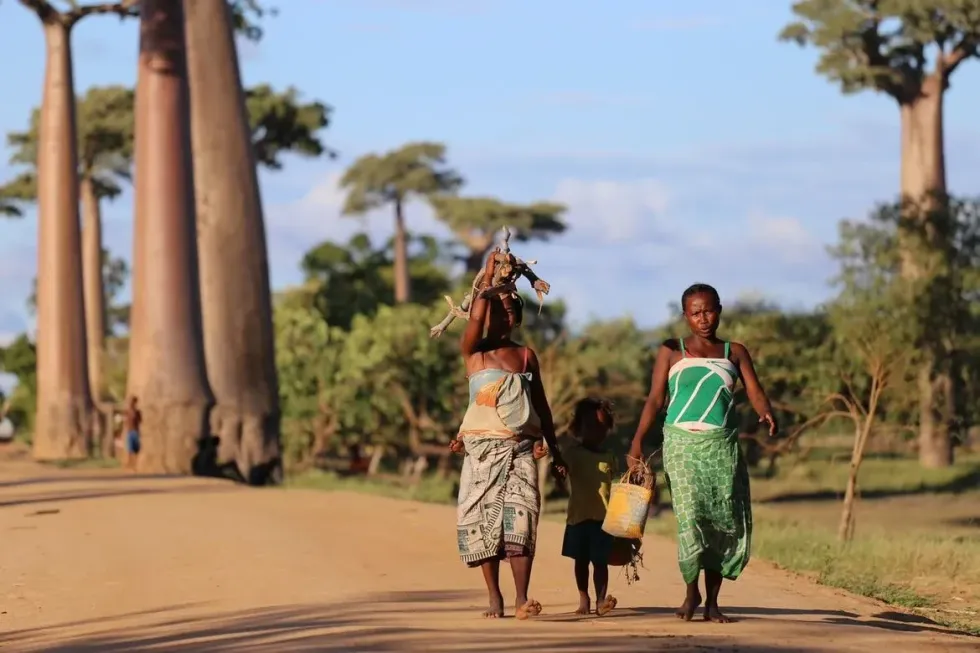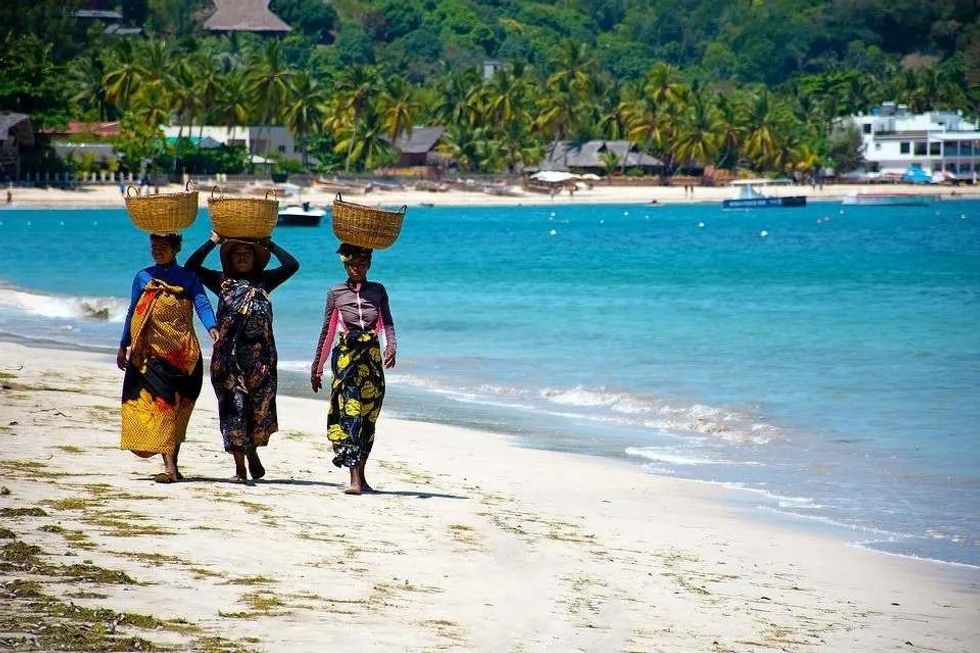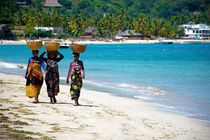37 Facts About Madagascar That You Wouldn't Have Known Before

Madagascar was once called the 'Malagasy Republic', and there is so much to know about famous Madagascar.
Madagascar was discovered by the Portuguese Navigator 'Diogo Dias' in the year 1500.
Madagascar has become a famous wildlife tourism destination. Have you ever seen the famous 'Madagascar' movie? Did you notice how it showed the exciting wildlife in the country?
Madagascar is indeed famous for its rich natural resources. Many people thought the Disney film was based on a fictional location in Africa, but Madagascar is actually an island country.
The region is 248.6 mi (400 km) east of mainland Africa. About 88 million years ago, the 'Madagascar split' happened, when it broke off from the continent. Then, in the early 19th century, the British and French were political rivals and they competed for influence over Madagascar, and the region went through colonial rule.
The region had a European influence for some time. The Malagasy flag was adopted a couple of years before their independence.
One of the most surprising facts about Madagascar is that it serves as a home to 70 different species of animals. The most exciting and beautiful chameleon species in the world are found in Madagascar, and you can find giant lemur and zebu in the national parks.
The actual location of Madagascar is about 300 miles east of the southern African region. Madagascar Island is located across the Mozambique channel.
The capital city of Madagascar is called 'Antananarivo'. Madagascar Island is the fourth largest island country in the world and it is a democratic country. The terrain of Madagascar can be described as a coastal plain, mountainous, or even a high plateau.
Madagascar is rich in tradition, and Malagasy culture is a melting pot. Madagascar has a tropical climate and is thought to be the oldest island in the world.
Malagasy people live in the older parts of the cities. They are sensitive about their traditions and rice is a staple food. A Lamba is a traditional garment worn by the Malagasy people.
Madagascar is famous for being called the Red Island because the reflection of the earth’s horizon gives it a reddish tint. Madagascar is also frequently called the 'Great Red Island'.
Between Madagascar's east coast and the rugged central highlands, there is a small strip of lowland forest that rises from sea level to 2,600 ft (792.4 m) above sea level. It has a surface area of about 43,500 sq mi (112,664.4 sq km).
As you travel inland, you are met with green, deforested hills surrounding rice-growing valleys surrounded by mangrove wetlands. Along the island's west coast, deep bays appear.
Madagascar has endemic flora and wildlife found only on the island. In fact, approximately 80% of Madagascar's plant and animal species are indigenous to the island.
The lemurs are the most well-known of these creatures, with more than 100 species including ring-tail lemurs, dwarf lemurs, and animal-like creatures known as aye-ayes. The island is also known for its vanilla and cocoa, as well as its stunning beaches and breathtaking scenery. Frogs, chameleons, geckos, birds, palms, and other animals can only be found in Madagascar.
If you liked our suggestions for facts about Madagascar then why not take a look at facts about Alaska, or facts about Japan.
Madagascar Economy
The famous island country Madagascar is rich in natural resources. The wealth of natural resources in the country is great, but the country is known among the poorest countries of the world.
- The country’s current 2020 statistics show that it has a GDP of only 495 US dollars and the GDP growth rate is found to be -4.2% the annual change. The currency of this beautiful country is Malagasy Ariary.
- You would be shocked to know that Madagascar is rich in natural resources like coal, fish, hydropower, but still is dependent on foreign aid. A history of conflicts has left most of Madagascar's populace impoverished. It comes under one of the poorest countries in the world because of colonization and political turmoil in the country.
- When it comes to population, only 13% of Malagasy people enjoy access to electricity. Also, three-quarters of Madagascar's population live in rural areas.
- Madagascar's children face the same challenges as children in poorer countries. Malnutrition rates are the fourth highest in the world, with 5 % of children growing up stunted or underdeveloped. Similarly, the education system is in disarray.
- The region's political turmoil caused nearly 1.4 million kids to drop out of school in 2012, and the number has not increased since.
- Madagascar now has the world's fifth-lowest education rate. For the previous five years, Madagascar's local economy has risen at a comparable rate.
- In 2018, there was an increase in GDP by 5.2 %. In 2017, inflation was 8.3% but fell to 7.3 % the following year.
Madagascar People
The people of Madagascar can be very friendly and welcoming. The official language of the people residing in Madagascar is Malagasy language and French. Madagascar is a country where animists and Christians dominate most of the country’s population. Let us get to know more about Madagascar people and how Malagasy live here.
- As we mentioned earlier, Madagascar is known as a poor country, hence the living standards of the Malagasy people residing in Madagascar are not so good.
- You would be shocked to know that two-third of Madagascar's population live below the poverty line.
- The average life expectancy in Madagascar is known to be around 66, which is less than many countries in the world.
- The current data about Madagascar’s population in the year 2020 has revealed that the country had a population of 2.77 crores.
- Madagascar’s fifty percent of the population are of animists, thirty percent of the population are Christian, and seven percent population of the country are Muslim.
- Churches in Madagascar play a great role in traditional and cultural links. If Madagascar’s 2021 statistics are taken into account, then you can see that there is an elevation in the country’s total population from the year 2020.
- The 2021 population showed that the current population is 2.86 crores.
Madagascar Heritage Sites
The island country is rich for its natural resources and most of the heritage sites in the country are also some of the great natural beauties of the world.
While it is more about the natural resources and the beauty they brought to humankind, there are a few heritage sites you may want to check out when you visit the area.
- Madagascar has some awesome rich heritage sites which are recognized by UNESCO. The famous UNESCO World heritage sites in Madagascar include Ambohimanga Royal Hill, Atsinanana Rainforests, Tsingy De Bemaraha Strict Nature Reserve.
- Among these three world heritage sites in Madagascar, two are natural sites and the one remaining is a cultural heritage site.

Madagascar French Influence
It would be no surprise to note that French is one of the official languages in the country.
- France has annexed the island Madagascar and had made it its official colony in the year 1896. France controlled the army and economy of Madagascar.
- France had a great influence on Madagascar. French tribes and people have also been living in the country for a long time now.
- Now, Madagascar is independent, but still the French Influence on the former French colony can be seen.
Madagascar Rituals/Culture
Madagascar has an interesting culture and rituals to acknowledge. The tribal population in the country is known to be have rich cultural influence and traditions in the country.
- The famous cultural tradition that would amuse everyone is called the 'Famadihana'. Apart from this, Madagascar is known to have some interesting cultural rituals.
- One of such ritual that the country follows is that the umbilical cord of the baby is buried under the ground. Also, all the houses in Madagascar face west.
- Did you know that cultural rituals here even maintain the timing during which they are supposed to be performed? For example, funerals are never done on Thursdays and after three months of age, the baby’s hair is chopped off.
Pirates In Madagascar
Well, we cannot deny how interesting the idea of pirates is. Because of the history of Madagascar, people wonder if pirates are still seen around Madagascar Island.
- Madagascar did suffer the invasions of pirates for trading around 1700. It would still be surprising to note that Madagascar still shows some signs of pirates being around, but these are not harmful.
- There are no buried pirate treasures found in Madagascar. Most pirates in late 1600 to 1700 had base operations in the Caribbean Sea.
- The coral reefs in Madagascar speak to the biodiversity and richness of the land; plant life in tropical rainforests, spiny forests, and other regions not only make it a biodiversity hotspot but also a safe haven for elusive species and rare species. The unique flora is a gift to the unique geology.
Did you know...
Madagascar is known for its distinctive nature and biodiversity as the largest island in the Indian Ocean. This area offers an extraordinary, once-in-a-lifetime experience, with beautiful views of nature, white sand beaches, stunning forests, and delectable local cuisine.
- Madagascar's distinctiveness lies in its number of indigenous species, yet it also lacks a diverse range of species. Madagascar's geographical isolation has resulted in a dearth of plant and animal species.
- Humans have introduced species into some groupings to represent them exclusively. In contrast to the continent, the island lacks large mammals that can be found on the continental African coast, including antelopes, zebras, elephants, camels, giraffes, lions, and cheetahs.
- Before people came to Madagascar thousands of years ago, the only huge African mammal that made it there was the hippopotamus.
- According to fossil evidence, hippos, like those that inhabit the Nile River basin today, probably swam to Madagascar during the Tertiary period.
- As their descendants evolved, they were dwarfed, becoming the distinct species of the island.
- Located 400 miles off the eastern coast of the African continent, Madagascar lies in the southern Indian Ocean. Madagascar has an area a little less than half the size of Arizona. It occupies 226,656 sq mi (587,036.3 sq km).
- There are 228881.3 sq mi (592,800 sq km) of land in Madagascar, the second largest island in the world. It lies in the Indian Ocean off the coast of East Africa.
- Physiographically, the country can be divided into three subregions, the eastern coastal strip, the middle plateau, and the western low plateaus and plains.
- Madagascar’s split from Africa as a lot to tell about the natural disasters that happened billions of years ago.
- It is told that scientists have found out pieces of evidence of Madagascar being the most vulnerable country to be affected by a massive earthquake and hence, as a result of which is separated from the African continent and the Indian subcontinent region.
- This splitting off from Africa, as most rumored around the world, is known to be people-oriented, however, it has been now proven that it was a geological action.
- Madagascar’s Western region is very interesting in terms of the whole country. The Western region of Madagascar is a long stretch of dry weather. It starts from the Mahajanga region to Morondava.
- The western part of Madagascar is most famous for its rich wildlife hotspot, which is the Ampijoroa Forest Station.
- Western Madagascar is rich in wildlife plants and animals in which most of the species found are endemic. Western Madagascar would take anyone’s breathes away just by witnessing the rich wildlife and the great sceneries.
- Madagascar is a great country that is abundant in rich natural resources and wildlife. The main attractions in this country are the lemur kind, color-changing chameleon species, orchid, and towering baobab tree (the national tree).
- Lemurs are considered the national animal of Madagascar. It is said that Madagascar is around twelve hundred years old. It is a must-visit place if one is highly interested in looking at the rich flora and fauna.
We believe the facts about Madagascar we have shared here shed some light on what you can expect when you visit the location. It is going to be an interesting journey to visit a place that is so rich in flora and fauna, and the people who are very sincere about the culture and the customs they follow.
This visit would be just as beautiful as a visit to South America.
Here at Kidadl, we have carefully created lots of interesting family-friendly facts for everyone to enjoy! If you liked our suggestions for facts about Madagascar then why not take a look at facts about Madagascar animals and forest of knives Madagascar.
We Want Your Photos!
More for You
Bachelor of Science specializing in Human Anatomy

Joan AgieBachelor of Science specializing in Human Anatomy
With 3+ years of research and content writing experience across several niches, especially on education, technology, and business topics. Joan holds a Bachelor’s degree in Human Anatomy from the Federal University of Technology, Akure, Nigeria, and has worked as a researcher and writer for organizations across Nigeria, the US, the UK, and Germany. Joan enjoys meditation, watching movies, and learning new languages in her free time.
Disclaimer
1) Kidadl is independent and to make our service free to you the reader we are supported by advertising. We hope you love our recommendations for products and services! What we suggest is selected independently by the Kidadl team. If you purchase using the Buy Now button we may earn a small commission. This does not influence our choices. Prices are correct and items are available at the time the article was published but we cannot guarantee that on the time of reading. Please note that Kidadl is a participant in the Amazon Services LLC Associates Program, an affiliate advertising program designed to provide a means for sites to earn advertising fees by advertising and linking to Amazon. We also link to other websites, but are not responsible for their content.
2) At Kidadl, we strive to recommend the very best activities and events. We will always aim to give you accurate information at the date of publication - however, information does change, so it’s important you do your own research, double-check and make the decision that is right for your family. We recognise that not all activities and ideas are appropriate for all children and families or in all circumstances. Our recommended activities are based on age but these are a guide. We recommend that these ideas are used as inspiration, that ideas are undertaken with appropriate adult supervision, and that each adult uses their own discretion and knowledge of their children to consider the safety and suitability. Kidadl cannot accept liability for the execution of these ideas, and parental supervision is advised at all times, as safety is paramount. Anyone using the information provided by Kidadl does so at their own risk and we can not accept liability if things go wrong.
3) Because we are an educational resource, we have quotes and facts about a range of historical and modern figures. We do not endorse the actions of or rhetoric of all the people included in these collections, but we think they are important for growing minds to learn about under the guidance of parents or guardians.







